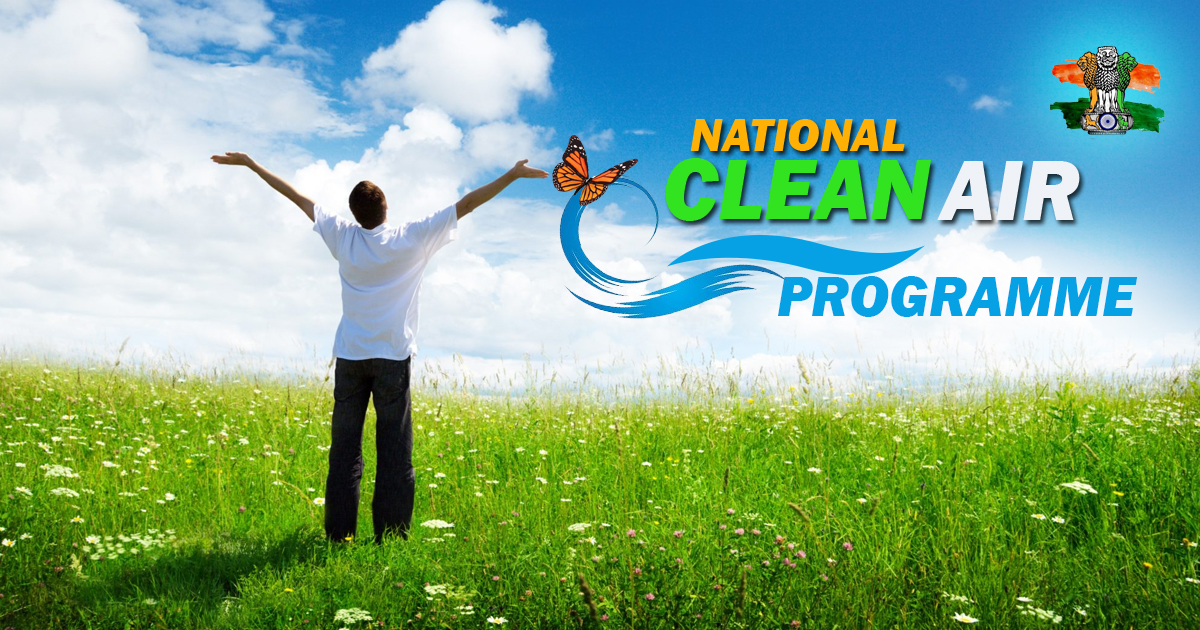Introduction:
India, a nation undergoing rapid economic growth and urbanization, faces a critical challenge: air pollution. This invisible enemy poses a severe threat to public health, environmental sustainability, and economic productivity. Recognizing the urgency of this issue, the Government of India launched the National Clean Air Programme (NCAP) in January 2019.
The Gravity of Air Pollution in India:
Air pollution in India has reached alarming levels, particularly in urban areas. Particulate matter (PM), especially PM2.5 (particles less than 2.5 micrometers in diameter) and PM10 (particles less than 10 micrometers in diameter), are the primary concerns.
These microscopic pollutants penetrate deep into the lungs, causing respiratory illnesses, cardiovascular diseases, and even premature death. A 2020 study by the Lancet Commission on Pollution and Health linked air pollution to over 1.6 million deaths in India in 2019.
The economic impact of air pollution is also significant. It leads to increased healthcare costs, reduced labor productivity, and damage to agricultural crops. A study by the World Bank estimates that air pollution costs India approximately 3% of its GDP annually.
The National Clean Air Programme: A Multi-Pronged Approach
In response to this crisis, the NCAP was launched as a time-bound national strategy with the ambitious goal of achieving a 20-30% reduction in PM concentrations by 2024 compared to 2017 levels. The program adopts a multi-pronged approach, focusing on several key areas:
- City-Centric Focus: NCAP prioritizes 132 cities (including 122 non-attainment cities exceeding national air quality standards and ten million-plus cities) across 24 states and Union Territories. These cities receive annual targets for PM reduction based on their baseline pollution levels.
- Industrial Pollution Control: The program emphasizes stricter emission norms for industries, promoting cleaner fuels like natural gas and biogas, and encouraging the adoption of advanced pollution control technologies.
- Vehicular Emission Reduction: NCAP pushes for a shift towards electric vehicles by providing subsidies and promoting the creation of charging infrastructure. It also advocates for stricter emission standards for existing vehicles, improved public transportation systems, and better traffic management practices.
- Waste Management: The program aims to reduce waste generation at the source and promote sustainable waste management practices. This includes encouraging waste-to-energy plants, composting, and stricter regulations against open burning of waste.
- Strengthening Monitoring: NCAP emphasizes the expansion of air quality monitoring networks across the country. Real-time data dissemination allows for better public awareness and targeted interventions.
- Public Awareness and Capacity Building: The program seeks to educate citizens about the health impacts of air pollution and encourage behavior changes towards cleaner practices. It also focuses on capacity building for government officials and other stakeholders involved in air quality management.
Key Initiatives of the NCAP:
Several key initiatives are driving the NCAP forward:
- PRANA (Portal for Regulation of Air-pollution in Non-Attainment cities): This online platform facilitates the monitoring and implementation of city-level air action plans under NCAP. It provides a platform for data sharing, progress tracking, and resource allocation.
- City-Specific Action Plans: Each non-attainment city develops a comprehensive action plan outlining sector-specific strategies to achieve their PM reduction targets. These plans are reviewed and monitored by the central government.
- FAME-II Scheme: The Faster Adoption and Manufacturing of Electric and Hybrid Vehicles in India (FAME-II) scheme provides financial incentives for the purchase of electric vehicles and the development of charging infrastructure.
- Green Rating Project (GRIP): This initiative aims to incentivize industries to adopt cleaner production processes and reduce air pollution. Industries are assigned environmental ratings based on their performance.
Challenges and Roadblocks:
Despite its comprehensive approach, the NCAP faces several challenges:
- Resource Constraints: Implementing the program requires significant investment in infrastructure, technology, manpower, and research and development. Mobilizing the necessary financial resources remains a major hurdle.
- Inter-sectoral Coordination: Effective air pollution control necessitates collaboration between central, state, and local governments. A lack of coordination and synchronized action can hinder progress.
- Public Participation: Raising public awareness, encouraging behavior change, and securing community buy-in for clean air initiatives are crucial for long-term success.
- Transitioning to Cleaner Alternatives: Shifting from traditional industries and fuels that contribute significantly to air.
The Way Forward:
Enhancing Funding: Public-private partnerships and innovative financing mechanisms can bridge the resource gap.
Technological Advancements: Investing in research and development of cleaner technologies for industries and transportation.
Capacity Building: Skilling manpower for air quality monitoring, enforcement, and implementation of clean technologies.
Community Engagement: Fostering a sense of ownership among citizens through targeted outreach programs and incentives for clean practices.
International Cooperation: Sharing best practices and leveraging international expertise for cleaner technologies.
Conclusion:
The NCAP presents a comprehensive framework for tackling air pollution. By overcoming challenges, strengthening implementation, and fostering public participation, the program can pave the way for a healthier and more sustainable future for India.
 Chinmaya IAS Academy – Current Affairs Chinmaya IAS Academy – Current Affairs
Chinmaya IAS Academy – Current Affairs Chinmaya IAS Academy – Current Affairs

